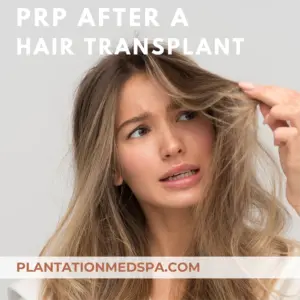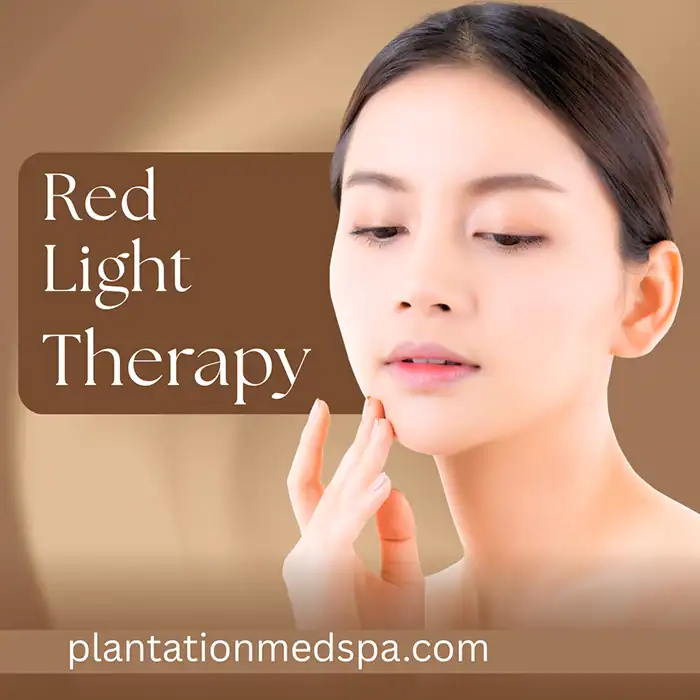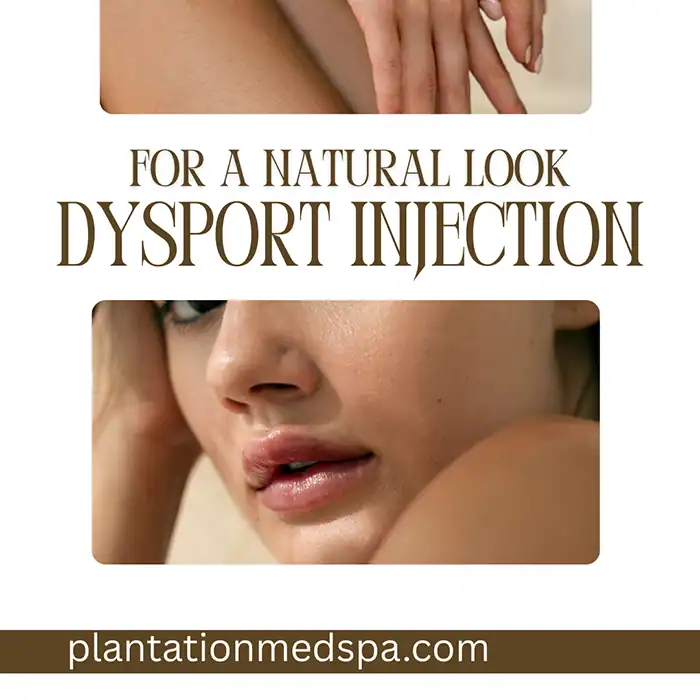The Essential Guide to Deciding if You Need PRP After a Hair Transplant
Table of Contents:
1. Introduction to PRP and Hair Transplants
2. Do I Need PRP After a Hair Transplant?
3. How PRP Complements Hair Transplant Procedures
4. Benefits of PRP After a Hair Transplant
5. Potential Risks and Side Effects of PRP
6. Understanding the PRP Procedure
7. Comparing PRP with Other Post-Transplant Treatments
8. Cost of PRP Therapy: Is It Worth It?
9. Real-Life Success Stories: PRP After Hair Transplants
10. Factors Influencing the Need for PRP After Hair Transplant
11. Ideal Candidates for PRP Therapy Post-Transplant
12. How Often Should You Get PRP Treatments?
13. Recovery and Aftercare: PRP vs. No PRP
14. Expert Opinions on PRP After Hair Transplants
15. Patient FAQs About PRP Post Hair Transplant
16. Conclusion
17. References
1. Introduction to PRP and Hair Transplants
Hair transplants have become a popular solution for those struggling with hair loss. This article will answer the question: Do I Need PRP After a Hair Transplant?
By transplanting hair follicles from one part of the scalp to another, individuals can achieve fuller, natural-looking hair. However, the journey doesn’t end with the transplant. Many are now considering Platelet-Rich.
Plasma (PRP) therapy is an additional treatment to enhance their results.
PRP therapy involves using a concentration of a patient’s platelets to accelerate the healing and growth processes. But is it necessary after a hair transplant?
This guide will delve into the benefits and considerations of combining PRP with hair transplants to help you make an informed decision.
2. Do I Need PRP After a Hair Transplant?
PRP therapy utilizes the healing properties of platelets found in your blood. These platelets contain growth factors that promote tissue repair and regeneration.
In a typical PRP procedure, a small amount of blood is drawn from the patient, processed to concentrate the platelets, and injected back into the scalp.
The idea is that these concentrated platelets will stimulate the hair follicles, enhancing their growth and leading to thicker, healthier hair. The scientific basis for PRP is well-founded, with numerous studies showing its efficacy in promoting hair growth and improving hair density.
3. How PRP Complements Hair Transplant Procedures
Combining PRP therapy with hair transplant procedures could enhance the results. PRP can improve the survival rate of transplanted hair follicles and accelerate the healing process.
It can also increase the blood supply to the hair follicles, providing the necessary nutrients for growth.
After a hair transplant, the scalp goes through a healing phase, during which the newly implanted follicles need support to thrive. PRP injections can provide this support, reducing the downtime and helping the follicles integrate better with the surrounding tissue.
4. Benefits of PRP After a Hair Transplant
One of the primary benefits of PRP therapy after a hair transplant is improved hair density. Patients often notice thicker and stronger hair strands, making the overall appearance more voluminous.
Additionally, PRP can reduce the chances of hair transplant shock loss, a common issue where newly transplanted hair temporarily falls out.
Another significant benefit is faster recovery. PRP’s growth factors help the scalp heal quicker, reducing inflammation and discomfort post-surgery. Patients who undergo PRP therapy often report less swelling and redness, contributing to a smoother recovery process.
5. Potential Risks and Side Effects of PRP
While PRP therapy is generally considered safe, it’s essential to be aware of potential risks and side effects. Some patients may experience mild pain at the injection site and redness and swelling.
An allergic reaction to the anticoagulant used during the PRP preparation process might occur in rare cases.
It’s crucial to consult with a qualified medical professional who can assess your suitability for PRP therapy. They can help mitigate risks by performing the procedure correctly and using sterile equipment.
6. Understanding the PRP Procedure
The PRP procedure starts with drawing a small amount of the patient’s blood. This blood is then placed in a centrifuge to separate the platelets from other blood components.
The concentrated platelets are then injected into the scalp, focusing on areas where hair growth is desired.
The entire process typically takes about an hour, and since it uses the patient’s blood, the risk of infection or allergic reaction is minimal. Patients can resume normal activities shortly after the procedure, making it a convenient option for many.
7. Comparing PRP with Other Post-Transplant Treatments
Several post-transplant treatments are available, including topical solutions, oral medications, and laser therapy. PRP stands out because it leverages the body’s natural healing processes without the need for chemicals or synthetic substances.
Topical solutions like minoxidil can be effective but often require continuous use to maintain results. Oral medications may have systemic side effects, and laser therapy can be time-consuming and costly.
PRP offers a more natural approach with long-lasting benefits.
8. Cost of PRP Therapy: Is It Worth It?
The cost of PRP therapy can vary widely depending on the provider and geographic location. On average, a single session can range from $500 to $2,000.
Many patients require multiple sessions to achieve optimal results, so it’s essential to consider the overall investment.
However, the benefits of improved hair density, faster recovery, and long-term hair health often justify the expense. Investing in PRP can enhance the outcomes of a hair transplant, making it a worthwhile consideration for many patients.
9. Real-Life Success Stories: PRP After Hair Transplants
Many patients have reported positive experiences with PRP therapy following their hair transplants. Testimonials often highlight significant improvements in hair thickness and overall satisfaction with the results.
For example, John, a 45-year-old businessman, noticed a substantial difference in the density of his hair within a few months of starting PRP treatments.
These success stories underscore the potential of PRP to complement and enhance hair transplant results. Hearing from others who have undergone the procedure can provide valuable insights and encouragement for those considering it.
10. Factors Influencing the Need for PRP After Hair Transplant
Several factors can influence whether PRP therapy is necessary after a hair transplant. These include the patient’s age, the extent of hair loss, the health of the scalp, and the quality of the transplanted hair follicles.
Younger patients with minimal hair loss may not require PRP as urgently as older patients with extensive thinning.
The overall health of the patient also plays a role. Those with underlying health conditions that affect hair growth may benefit more from PRP’s additional support. Discussing these factors with your doctor to determine the best course of action is essential.
11. Ideal Candidates for PRP Therapy Post-Transplant
Not everyone is an ideal candidate for PRP therapy. Individuals with blood disorders, skin conditions, or a history of heavy smoking may not see the same benefits from PRP as healthier individuals.
It’s crucial to undergo a thorough medical evaluation before treatment.
Ideal candidates typically have realistic expectations and a commitment to follow through with the recommended number of sessions. They should also have a healthy scalp and no contraindications to the procedure.
12. How Often Should You Get PRP Treatments?
The frequency of PRP treatments can vary based on individual needs and goals. Most patients start with three to four treatments about four to six weeks apart.
After the initial series, maintenance treatments every six to twelve months may be recommended to sustain the benefits.
Consulting with a hair restoration specialist can help tailor a treatment plan to your specific needs. They can adjust the frequency and number of sessions based on your response to the therapy and overall progress.
13. Recovery and Aftercare: PRP vs. No PRP
Recovery after a hair transplant can be significantly smoother with PRP therapy. Patients who undergo PRP often report less discomfort and faster healing times.
The growth factors in PRP help reduce inflammation and promote quicker tissue regeneration.
Without PRP, the recovery might involve more swelling, redness, and an extended healing. PRP can also enhance the final results, leading to thicker, more robust hair growth. Proper aftercare, including following medical advice and maintaining scalp hygiene, is crucial regardless of whether you opt for PRP.
14. Expert Opinions on PRP After Hair Transplants
Many hair restoration experts advocate for PRP therapy following hair transplants. They highlight its ability to improve graft survival rates, reduce healing time, and enhance overall hair density.
Dr. Smith, a renowned hair transplant surgeon, often recommends PRP to his patients to maximize their results.
However, some experts advise caution and suggest that PRP may not be necessary for everyone. It’s essential to consult with a qualified professional who can provide personalized advice based on your unique situation and needs.
15. Patient FAQs About PRP Post Hair Transplant
Q1. What is PRP therapy?
Concise Answer: PRP therapy involves injecting a concentration of a patient’s platelets to promote healing and hair growth.
Detailed Answer: PRP therapy, or Platelet-Rich Plasma therapy, uses a patient’s blood to concentrate the platelets, which are injected into the scalp.
These platelets release growth factors that enhance healing and stimulate hair follicles, improving hair growth and density.
Q2. Is PRP necessary after a hair transplant?
Concise Answer: PRP is not necessary but can enhance the results of a hair transplant.
Detailed Answer: PRP is not mandatory after a hair transplant but can provide significant benefits. PRP can improve the survival rate of transplanted follicles, accelerate the healing process, and enhance overall hair density. Many patients choose PRP to optimize their results.
Q3. How does PRP work with hair transplants?
Concise Answer: PRP promotes healing and stimulates hair growth, complementing hair transplant results.
Detailed Answer: PRP injects concentrated platelets into the scalp, releasing growth factors that aid tissue repair and regeneration. This process enhances the integration and survival of transplanted hair follicles, leading to better overall outcomes.
Q4. What are the risks of PRP therapy?
Concise Answer: PRP therapy risks include pain, redness, swelling, and rare allergic reactions.
Detailed Answer: While PRP therapy is generally safe, some patients may experience mild pain at the injection site, redness, and swelling. An allergic reaction to the anticoagulant used in the preparation process may occur in rare cases.
Consulting with a qualified professional can help minimize these risks.
Q5. How much does PRP therapy cost?
Concise Answer: PRP therapy typically costs between $500 and $2,000 per session.
Detailed Answer: The cost of PRP therapy can vary based on the provider and location, but on average, it ranges from $500 to $2,000 per session. Multiple sessions are often required to achieve optimal results, so it’s essential to consider the overall investment when deciding on PRP therapy.
Q6. Who is an ideal candidate for PRP?
Concise Answer: Ideal candidates are healthy individuals with realistic expectations and no contraindications.
Detailed Answer: Ideal candidates for PRP therapy are generally healthy, have realistic expectations, and are committed to following through with the recommended treatment plan.
Individuals with blood disorders, skin conditions, or a history of heavy smoking may not see the same benefits and should consult with a medical professional.
Q7. How often should PRP treatments be done?
Concise Answer: PRP treatments are typically done initially every four to six weeks, then every six to twelve months for maintenance.
Detailed Answer: Most patients start with three to four PRP treatments about four to six weeks apart. After the initial series, maintenance treatments every six to twelve months may be recommended to sustain the benefits.
A hair restoration specialist can help tailor the treatment frequency to individual needs.
Q8. What is the recovery like with PRP?
Concise Answer: Recovery with PRP is typically smoother, with less discomfort and faster healing.
Detailed Answer: Patients who undergo PRP therapy often experience a smoother recovery process with less discomfort and faster healing. The growth factors in PRP help reduce inflammation and promote quicker tissue regeneration, leading to a more pleasant recovery experience.
Q9. Are there alternatives to PRP?
Concise Answer: Alternatives to PRP include topical solutions, oral medications, and laser therapy.
Detailed Answer: Several alternatives to PRP therapy exist, including topical solutions like minoxidil, oral medications such as finasteride, and laser therapy.
Each of these treatments has its benefits and drawbacks, and it’s essential to discuss them with a hair restoration specialist to determine the best option for your needs.
Q10. Can PRP be combined with other treatments?
Concise Answer: PRP can be combined with other hair loss treatments for enhanced results.
Detailed Answer: PRP therapy can be effectively combined with other hair loss treatments, such as topical solutions, oral medications, and laser therapy. Combining treatments often provides synergistic effects, leading to more comprehensive and effective results in combating hair loss.
Q11. How long do the effects of PRP last?
Concise Answer: The effects of PRP can last up to a year, with maintenance treatments extending benefits.
Detailed Answer: The effects of PRP therapy can last up to a year, depending on individual factors such as age, health, and the extent of hair loss. Maintenance treatments every six to twelve months can extend and sustain the benefits, ensuring long-term hair health and growth.
Q12. What should I expect during a PRP session?
Concise Answer: During a PRP session, expect blood draw, processing, and scalp injections.
Detailed Answer: A PRP session typically involves drawing a small amount of the patient’s blood, processing it in a centrifuge to concentrate the platelets, and injecting them into the scalp.
The entire process usually takes about an hour, and patients can often resume normal activities shortly after the procedure.
Q13. Is PRP painful?
Concise Answer: PRP is generally not painful, but some may experience mild discomfort.
Detailed Answer: PRP therapy is generally not considered painful, though some patients may experience mild discomfort during the injections. The use of numbing agents can help minimize any pain, and most patients find the procedure to be tolerable.
Q14. How do I prepare for PRP therapy?
Concise Answer: Preparation for PRP involves following pre-procedure instructions from your doctor.
Detailed Answer: Preparing for PRP therapy typically involves following specific pre-procedure instructions from your doctor, such as avoiding certain medications and supplements that can affect blood clotting. Staying well-hydrated and ensuring a healthy diet can also help optimize the therapy results.
Q15. Are there any long-term side effects of PRP?
Concise Answer: Long-term side effects of PRP are rare and usually minimal.
Detailed Answer: Long-term side effects of PRP therapy are rare and generally minimal. The infection or allergic reaction risk is low since the procedure uses the patient’s blood. Any side effects, such as mild pain or swelling, are typically short-lived and resolve independently.
16. Conclusion
Deciding whether to undergo PRP therapy after a hair transplant is a personal choice that depends on various factors. While not mandatory, PRP can significantly enhance the results of a hair transplant by improving hair density, accelerating the healing process, and reducing the risk of shock loss.
Patients who opt for PRP often report higher satisfaction with their hair restoration outcomes.
It’s essential to consider the potential risks and costs associated with PRP therapy. Consulting with a qualified hair restoration specialist can provide valuable insights into whether PRP is the right choice for you.
By understanding the benefits and considerations, you can make an informed decision that aligns with your hair restoration goals.
Ultimately, PRP offers a natural, effective way to support hair growth and maximize the benefits of a hair transplant. Whether you want to enhance your results or seek additional support for your hair follicles, PRP therapy can be a valuable tool in your hair restoration journey.
Hopefully, we have answered the following questions: Do I Need PRP After a Hair Transplant?
Transform Your Look with PRP after a Hair Transplant at Plantation Med Spa
Experience the revolutionary power of the PRP after a hair transplant for a youthful look and feel at Plantation Med Spa, Florida. Our state-of-the-art treatment revitalizes and rejuvenates, offering you a path to radiant, youthful skin. Why wait to unlock your best self?
Call us now at (954) 595-2607 or book online. Your journey to flawless skin begins with just a click or a call.
Embrace the beauty, embrace innovation – Embrace You.
16. References
- Beverly Hills Wellness Center & Med Spa
- Dr. Dahabra
- West Palm Beach IV Therapy
- Platelet-Rich Plasma for Hair Loss
- Platelet-Rich Plasma and Stem Cells for Hair Growth: A Review of the Literature
- PRP and Hair Transplants
- Platelet-rich plasma for Hair Restoration
- Effectiveness of Platelet-Rich Plasma for Androgenetic Alopecia: A Review of the Literature
- Investigating the Safety and Efficacy of Platelet-Rich Plasma (PRP) Treatment for Female Androgenetic Alopecia: Review of the Literature
- Nonsurgical Hair Restoration Treatment
- The Efficacy of Platelet-Rich Plasma in the Field of Hair Restoration and Facial Aesthetics—A Systematic Review and Meta-analysis



